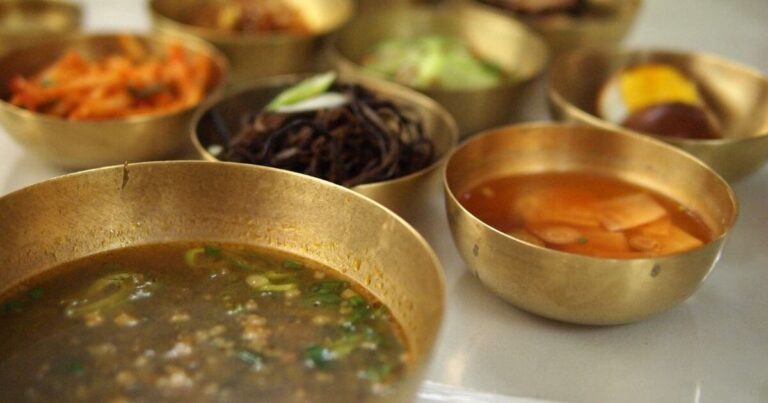Introduction: North Korea’s Food Scene
North Korea is known for its tightly controlled, centralized economy, and its food industry is no exception. The country has long struggled with food shortages, and its citizens are largely dependent on government rations for their basic sustenance. Despite this, North Korea has a rich culinary culture, with a diverse range of traditional dishes that draw on Korean, Chinese, and Japanese influences.
The State of Food Markets in North Korea
Food markets in North Korea are few and far between. The country’s economy is heavily regulated by the government, and most food production and distribution is managed by state entities. However, there are a small number of private markets, known as jangmadang, where local farmers and traders sell their goods. These markets are often unlicensed and operate in a legal grey area, but they are an important source of food for many North Koreans. In recent years, the government has relaxed some regulations on these markets, allowing for slightly more freedom and competition.
Are There Any Food Festivals in North Korea?
North Korea is known for its elaborate state-sponsored festivals, but are there any food festivals in the country? The answer is yes, but they are not widely advertised or accessible to tourists. The most famous of these festivals is the Pyongyang International Food Exhibition, which has been held annually since 1989. The event showcases a wide range of food products from around the world, as well as North Korean specialties. However, the exhibition is primarily geared towards foreign buyers and is not open to the general public.
Uncovering the Mystery: A Glimpse into North Korea’s Food Festivals
Despite the lack of public access to North Korea’s food festivals, there have been some reports from journalists and other visitors who have been able to attend. These events are typically highly choreographed and designed to showcase the best of North Korean cuisine. Visitors have reported being served lavish meals featuring multiple courses of traditional dishes, as well as more modern creations like sushi and pizza. There is also a strong emphasis on presentation, with elaborate table settings and decorative arrangements.
The Significant Role of Food in North Korean Culture
Food plays a significant role in North Korean culture, both as a source of sustenance and as a symbol of national identity. Traditional dishes like kimchi and naengmyeon are staples of North Korean cuisine, and are often shared as a way of building community and social bonds. In addition, the government often uses food as a way of reinforcing its ideological message. For example, the “Let’s Eat Two Meals a Day” campaign, launched in the 1970s, encouraged North Koreans to eat less in order to conserve resources and show their commitment to the socialist cause.
Conclusion: The Potential for North Korea’s Food Scene
Despite the challenges facing North Korea’s food industry, there is potential for growth and innovation in the years to come. The government’s recent efforts to relax some restrictions on private markets suggest that there may be more opportunities for small-scale food producers and entrepreneurs. In addition, the country’s unique culinary culture and traditions could be a draw for tourists and food enthusiasts from around the world. However, for this potential to be realized, North Korea will need to address its underlying economic and political challenges, and work to create a more open and transparent food industry.

